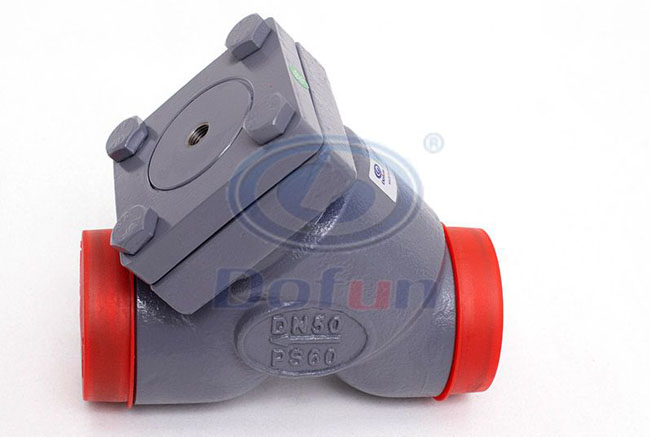A check valve is usually installed in a pipeline to prevent backflow. A check valve is basically a one-way valve in which the flow is free to run in one direction, but if the flow is diverted the valve will close to protect the pipe, other valves, pumps etc. After installation, a water hammer may occur. Water hammer is often applied with too much force and can easily damage pipework or components.
Check valves are used in many different applications. For example, they are often placed on the outlet side of a pump to prevent the pump from flowing backwards. Centrifugal pumps (the most common type of pump) are not self-priming, so non-return valves are essential to keep water in the pipework. In addition, check valves are very commonly used in HVAC systems (heating, ventilation and air conditioning systems). HVAC systems are used, for example, in large buildings where the coolant is pumped to multiple floors. Here a check valve has been installed to ensure that the coolant is not flushed downwards.
Check valve supplier advises you that when selecting a check valve it is important to carry out a cost-benefit analysis of the particular system. The usual focus is on reducing costs while obtaining the lowest possible pressure loss, but when it comes to checking valves, greater safety equals higher pressure loss. Therefore, to ensure that the check valve protects the system properly, each system must be evaluated separately and factors such as water hammer risk, acceptable pressure loss and the financial consequences of installing a check valve with too much safety must be considered.

In a pumping system, water is pressed from a lower level to a higher level by a pump. The fluid flows in one direction only when the pump is running. When the pump stops, the flow of fluid will decrease until it too stops. Because the entire pipe will rise when the fluid stops flowing it will return along the pipe. To prevent this backflow from entering the pump, well or inlet, a check valve must be fitted.
In many cases, the speed at which the fluid changes direction is not a concern and a standard check valve will perform well. However, in pumping systems where rapid backflow can occur, it is vital that the correct check valve is selected.
If the pump stops before the check valve is fully closed and the forward flow reverses backwards towards the pump, that flow will force the valve to slam against its seat. This situation will stop the reverse flow almost immediately and this instantaneous stop will result in a water strike in the pipe. This produces a loud hammering sound, which is not the sound of a valve entering its seated position, but the stretching of the pipe under these conditions.
The ensuing pressure waves (fluctuations) can cause considerable damage to the system due to the vacuum pressure created, including pipe rupture, bursting, cavitation and implosion. It is also important to note that these failures may not be due to a large surge pressure, but to repeated surges that eventually lead to fatigue failure of the system.
It is important to note that other factors are required to ensure a safe and trouble-free system. The correct number, type and size of air valves, the closing and opening times of isolation valves, flow control valves etc. all need to be considered to protect the system from pressure fluctuations.